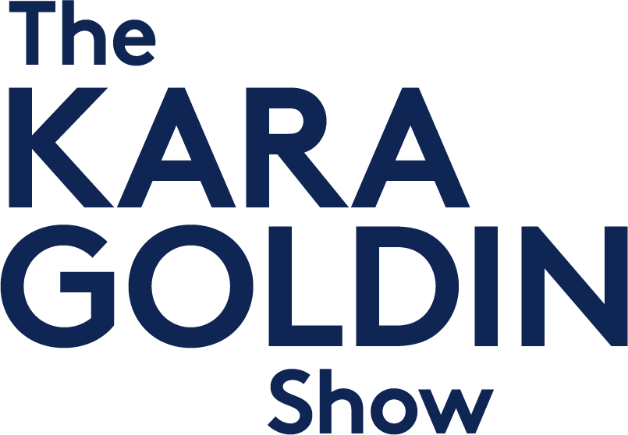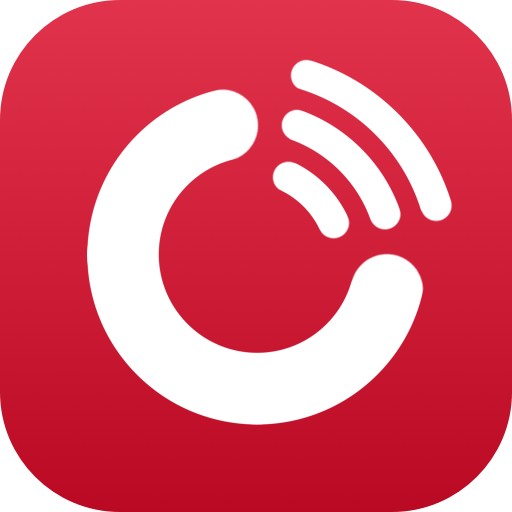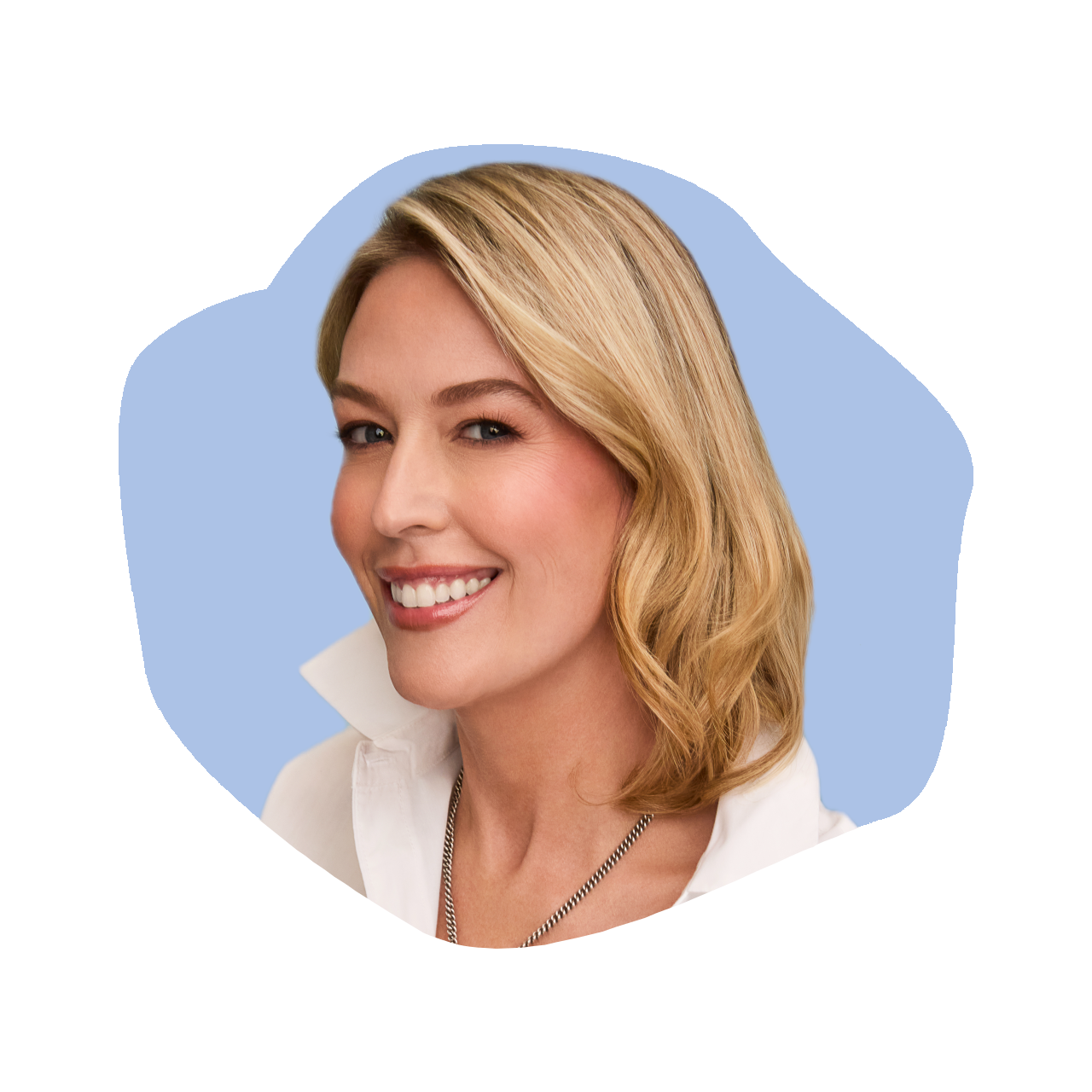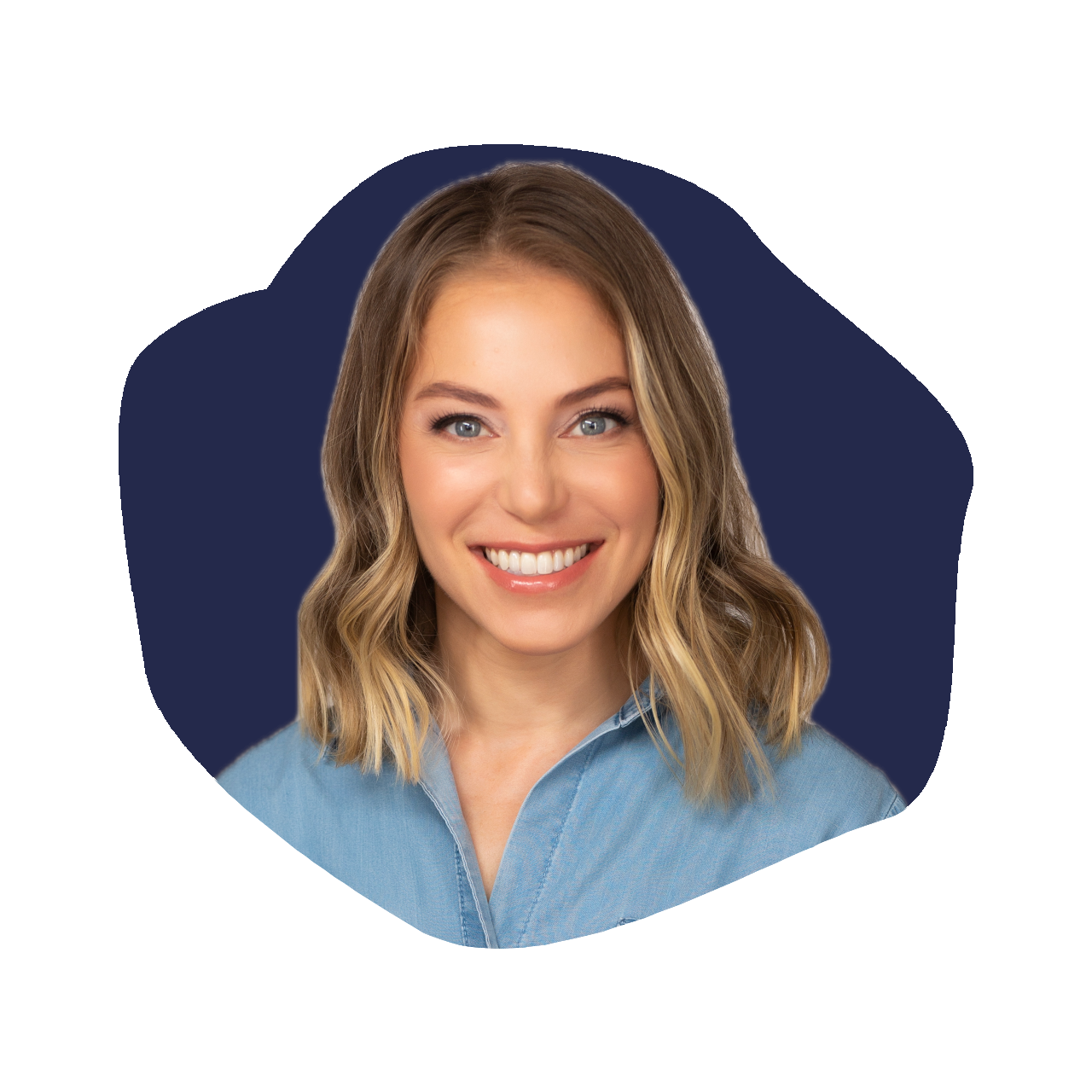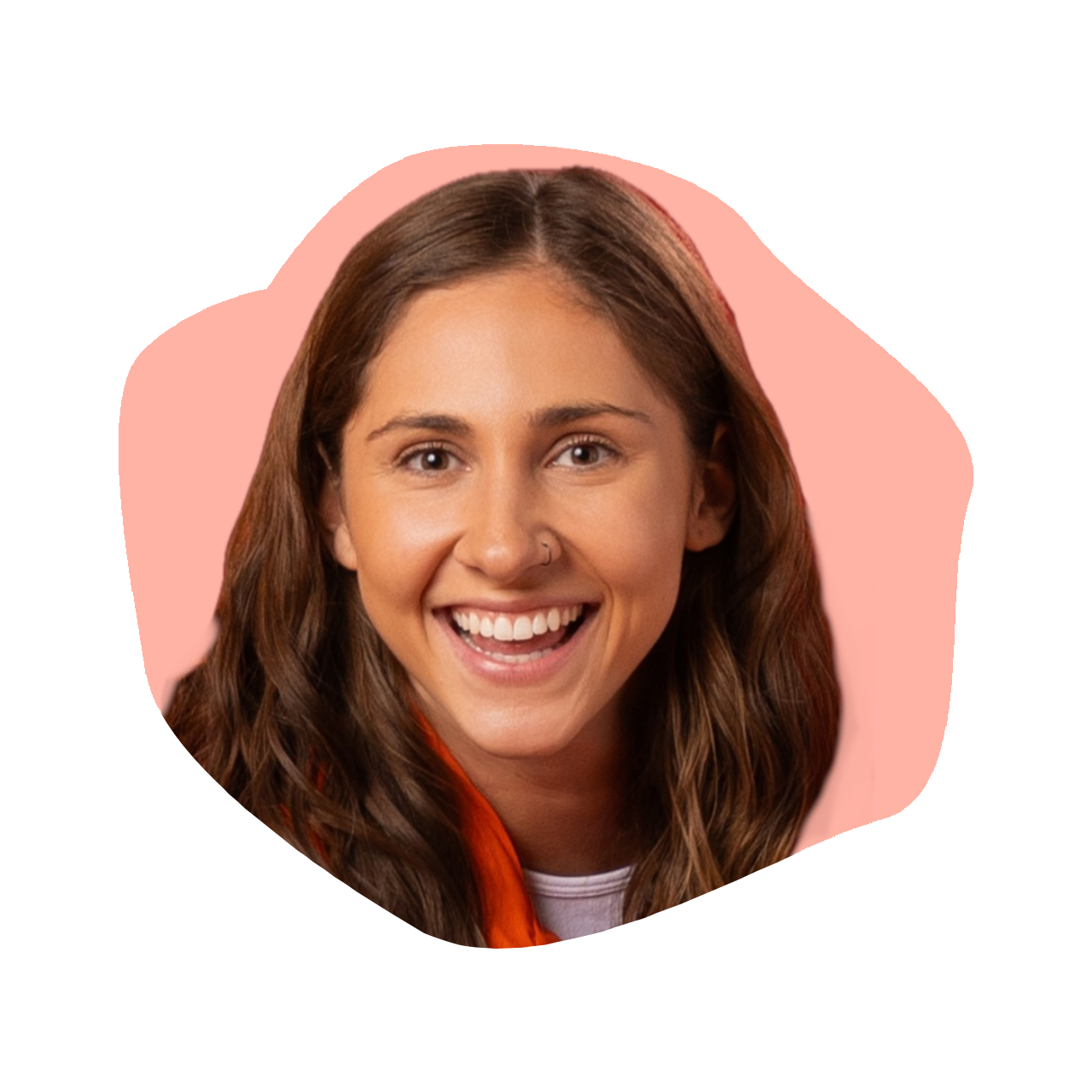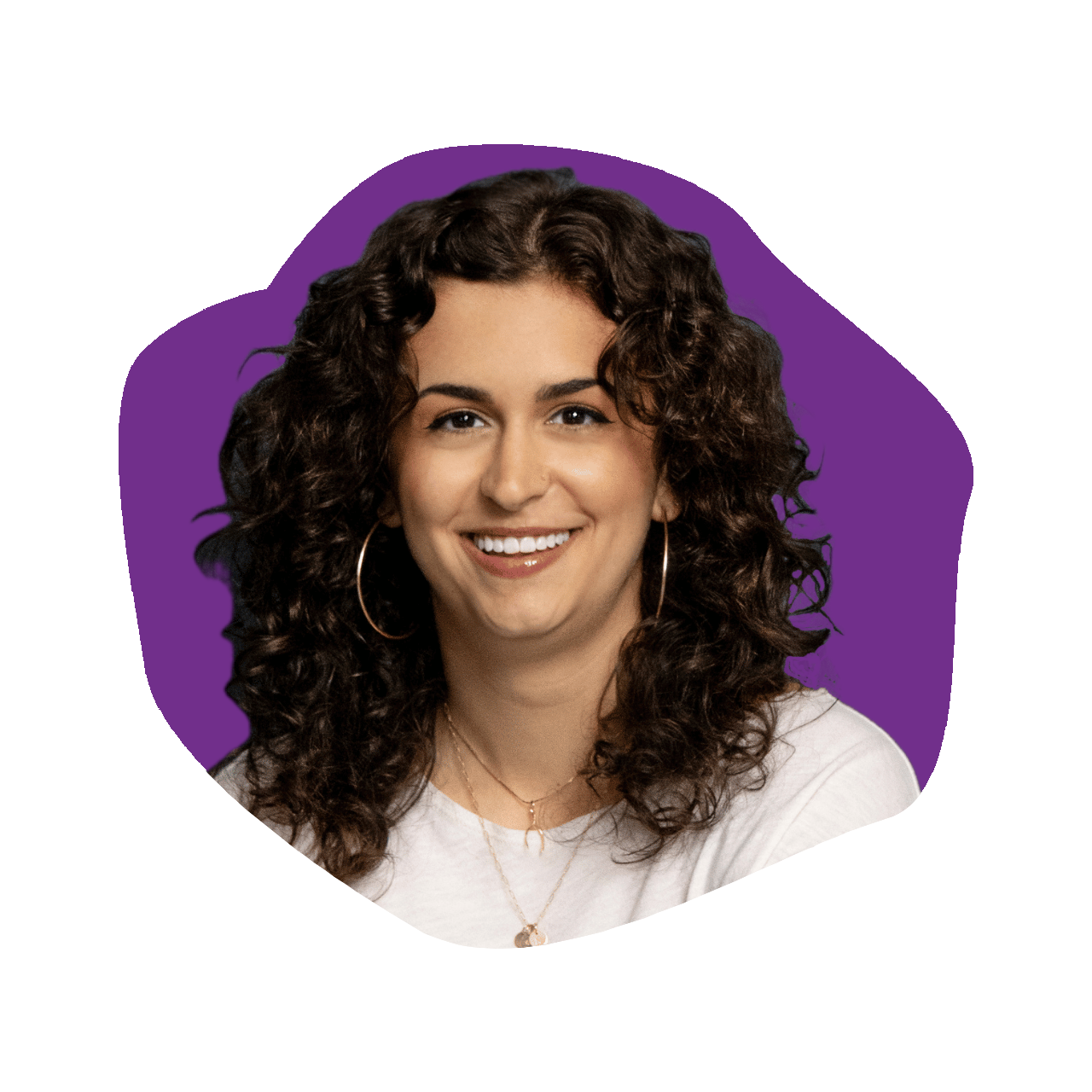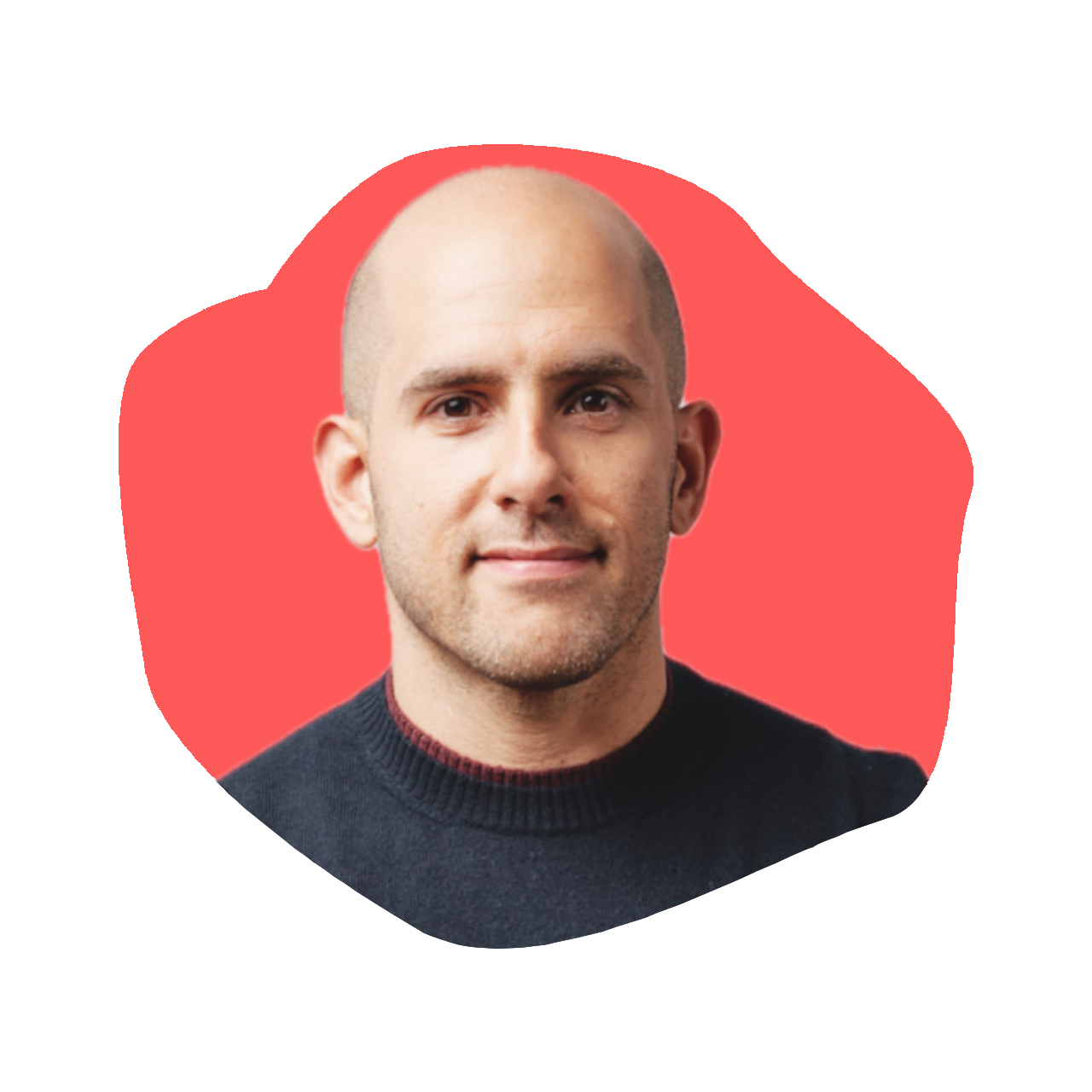Jordan Nathan: Founder & CEO of Caraway
Episode 723
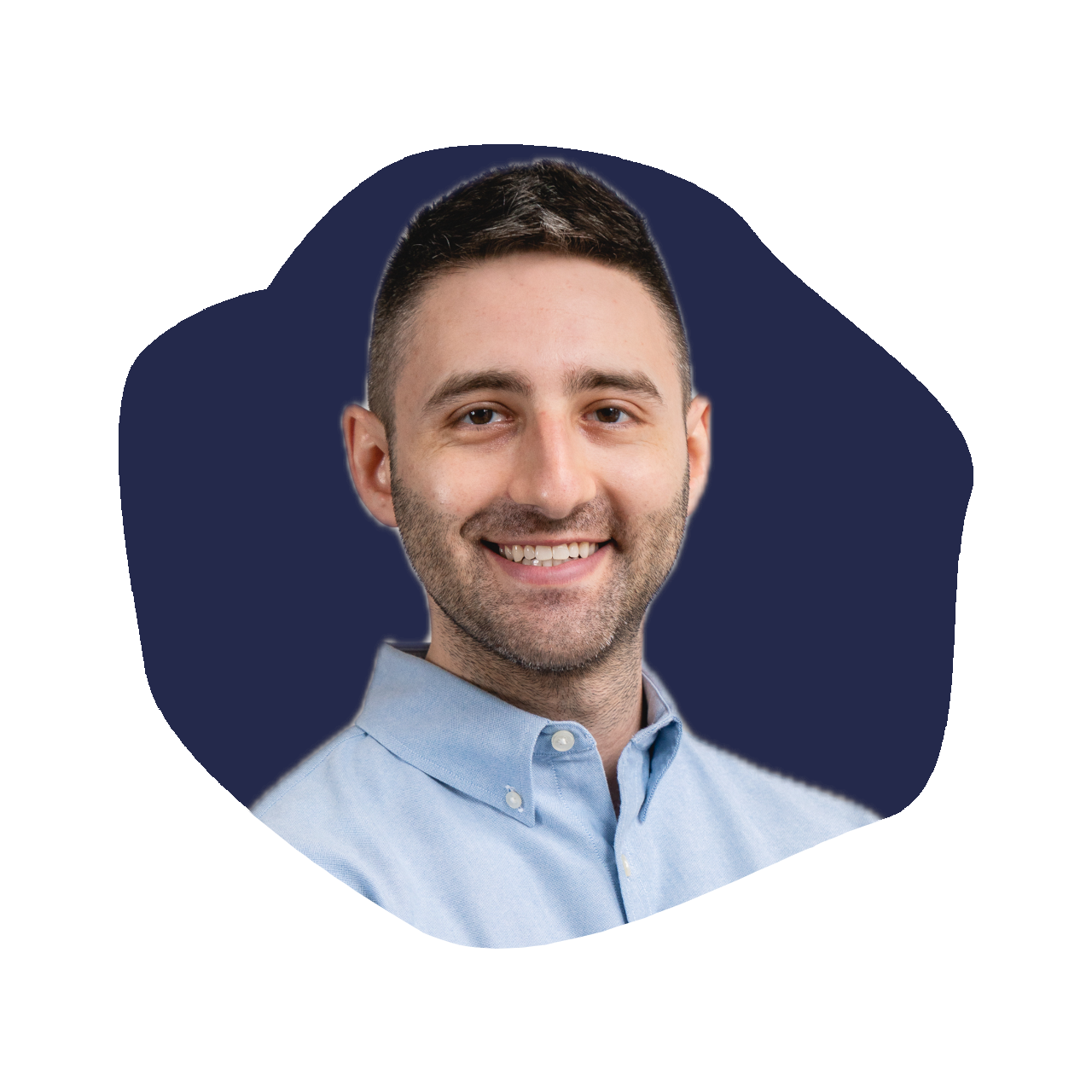
On this episode of The Kara Goldin Show, I’m joined by Jordan Nathan, Founder and CEO of Caraway—the design-forward, non-toxic home goods brand that has redefined modern cookware. What started in 2019 with a waitlist of over 150,000 has quickly scaled into one of the fastest-growing home brands of the last decade. From bakeware to tea kettles, Caraway is leading the charge in cleaner, safer kitchen essentials—with serious style.
In our conversation, Jordan shares how a personal experience with Teflon toxicity inspired the brand, how Caraway built massive consumer trust from day one, and what it takes to scale a mission-driven product in a competitive market. We also discuss the evolution from DTC to omnichannel, the role of social media in brand storytelling, and why he’s thinking far beyond the kitchen when it comes to what’s next.
If you’re curious about brand-building, the future of home goods, or how to turn pain into purpose—this episode is packed with insight. Now live on The Kara Goldin Show.
Resources from
this episode:
Enjoying this episode of #TheKaraGoldinShow? Let Kara know by clicking on the links below and sending her a quick shout-out on social!
Follow Kara on LinkedIn – Instagram – X – Facebook – TikTok – YouTube – Threads
Have a question for Kara about one of our episodes? Reach out to Kara directly at [email protected]
To learn more about Jordan Nathan and Caraway:
https://www.instagram.com/caraway_home/
https://www.instagram.com/jordannathan/
https://www.linkedin.com/company/carawayhome/
https://www.linkedin.com/in/jordan-nathan-6211114a/
https://www.carawayhome.com/
Transcript
Kara Goldin 0:00
I am unwilling to give up, that I will start over from scratch as many times as it takes to get where I want to be. I want to be you. Just want to make sure you will get knocked down. But just make sure you don’t get knocked out, knocked out. So your only choice should be go focus on what you can control. Control, control. Hi everyone, and welcome to the Kara Goldin show. Join me each week for inspiring conversations with some of the world’s greatest leaders. We’ll talk with founders, entrepreneurs, CEOs and really, some of the most interesting people of our time. Can’t wait to get started. Let’s go. Let’s go. Hi everyone, and welcome back to the Kara Goldin show. Today’s guest is someone who has completely transformed the way we think about what we bring into our kitchens. Jordan Nathan is the founder and CEO of Caraway, and it is the non toxic design forward cookware brand that has become a go to for home cooks, interior design lovers and anyone who wants a healthier, more beautiful kitchen, as I was just telling Jordan, he has incredible fans here at the Goldin house. So and my sons are convinced that you can make better eggs with the Caraway pan. So he definitely got some new consumers going, for sure. But since launching in 2019 with a wait list of over 150,000 Jordan has scaled Kara way into one of the fastest growing home brands of the decade. So what started with stylish, toxic, free cookware has expanded now into bakeware, food storage, kettles, prep ware, you name it. And what really sets Kara way apart Jordan’s commitment to making products that don’t just look good, but they also are doing good. So I cannot wait to talk to Jordan about this a bit more and hear really, what the secret sauce is to building the brand that he has thus far. So welcome, Jordan. How are you
Jordan Nathan 2:12
doing? Great. Thanks so much for having me on the show.
Kara Goldin 2:15
Absolutely. I’m very excited to have you here. And as I said, I’m a fan of Kara way. So it’s, it’s, you know, I, I really always love to hear the story behind the brands, so I’m very excited to have you here. So let’s start with the basics. How would you describe the Kara way brand that you’ve built, and why do you think it resonates so deeply with consumers?
Jordan Nathan 2:41
Yeah, so we founded the brand back in late 2019 and, you know, we started with cookware. And really the impetus to start the brand was I actually got Teflon poisoning accidentally while cooking at my home one night, I had taken a Teflon pan to the burner. One night, turned on the flame, ended up getting a phone call, and walked away from the kitchen for about 45 minutes, came back and the pan was black. Actually got sick from the fumes from the pan called poison control, and found out that I had what’s called Teflon flu, which is kind of flu like symptoms that you get from overheating a Teflon pan. And you know, when we kind of set out to build Caraway, the goal was really to create cookware that was clean and non toxic. And you know, I think today, we’re really looking to create a brand that stands for the clean home and clean living. And you know, for us, that mission of always looking to improve, always looking to offer consumers the safest products and access to safer homes and kitchen is is, you know, really what our core mission is, and what we set out to
Kara Goldin 3:53
build. You had this personal experience with Teflon that led you to not only have a, you know, recognition of what the problem was and out there, but it’s one thing to have, like, Hey, I wish somebody else would do this. Maybe you even give other people the idea, but then you just decide I need to go do this. I need to go and develop not just a product or a series of products, but actually launch a company. So can you walk us through, how, like, what were you thinking? That’s a good question.
Jordan Nathan 4:31
It’s been a fun but challenging road. You know, I kind of went through this experience and really felt uniquely suited to tackle this problem. I think, you know, all the best businesses are built from personal experiences and challenges. And I think as a consumer, I’ve always been really into design and clean living and kind of going through this process, you know, found out how dangerous most kind of kitchenware was in the. The industry. And, you know, I think for me, I grew up in a household where both parents were entrepreneurs, and actually looked to launch my first business out of college, which didn’t make it, but was an awesome experience. And was always looking for my next thing, and kind of going through this scary experience of getting Teflon flu, everything kind of clicked, you know, as a perfect marriage of kind of consumer products, clean materials, design. And you know, when we were looking to launch the brand, really wanted to create something that would be around in 100 years. And so, you know, everything we do at Kara way is to take a really intentional and thoughtful approach. And, you know, it’s been a really fun journey, and obviously a lot of challenges along the way. But, you know, I think, yeah, really glad I took the leap and went for it.
Kara Goldin 5:56
That’s awesome. So you launch, I read that you had 150,000 person plus wait list, and that’s no small, small feat. So wasn’t that just incredibly scary? I mean, it’s great, but then all of a sudden you’re like, oh boy, I’ve got to actually make sure that I can fulfill so that I don’t lose these consumers. It
Jordan Nathan 6:21
took us about 18 months to get to market. And in that timeframe, you know, when you’re building a product, I’m sure you went through this, you’re really focused on building the brand and product. And I wouldn’t say you have a lot of free time on your hands, but you really want to get going on building the business. And you know, we look back at a lot of the early consumer brands. And Harry specifically, was really successful at launching with a wait list. And so we wanted to build something very similar. And what was really fun was, in the pre launch process, was we really brought the consumer with us throughout the journey. And I think most importantly is we had a defined launch date of November 2019, so as you’re building that list, it was really important to keep the consumers updated. It was also a great base to kind of share designs and surveys with. But really throughout the process, we were, you know, sending content on the R and D process, and kind of shared a lot of the brand learnings and development. And I think having that waitlist also held us accountable to that launch date. For us, it was kind of make or break for our category, most holiday most sales in the kitchen category are all holiday based, and about 50% and so for us to have a really successful launch, we had to hit that launch date. And I think building the wait list was a a great way to get the brand off the ground and kind of launch with a, you know, subset of consumers who’ve been invested in kind of the building of it. And then also, you know, I think created a sense of accountability, of we have to hit the state, we have to get it out. And, you know, people are kind of counting on us.
Kara Goldin 7:59
Yeah, definitely. So obviously, you’re not using Teflon to coat the pans, but you know, they’re non stick, they’re non toxic. So can you talk a little bit about the makeup of each of your products?
Jordan Nathan 8:14
Yeah? So we use a ceramic based non stick. It’s a sol gel. Technology. Has no PFAs, no lead, no cadmium. We do a ton of third party testing, and when we look to launch the brand, interestingly, ceramic had existed on the market for about a decade, and it kind of just sat on retail shelves. Nobody explained like why it existed or how it was different. And a lot of the brands who are selling Teflon were touting kind of the Eco benefits of it, and really saw this gap in the market along, you know, using kind of a digital presence to tell the story and build that relationship with the customer. And so for us, you know, we didn’t come up with the technology. We have our own proprietary coating. But, you know, saw an opportunity where there was this great alternative consumers didn’t know about it, and building a digital business, we could tell that story. We could introduce consumers to the concept of ceramic and start building the market, which was really small at the time when we launched,
Kara Goldin 9:19
that’s, it’s amazing. They’re, they’re really great. I mean, they’re, they’re heavy, but they’re not too heavy and but they’re just solid. I and I will believe you that they will last for a very long time. I also love the different colors that you have, that you can have it with navy blue, sort of a, how do you describe it like a, what’s it called the access, not an accessory,
Jordan Nathan 9:47
but a lid holder and station? Yeah,
Kara Goldin 9:51
exactly. It’s, it’s super, super great. So can you talk about how, how that has been really better? Official, because not a lot of people do it. Typically, it’s like a pan, but it’s not something that is a little bit more personalized, I guess
Jordan Nathan 10:08
so. Design in general is really core to our DNA at Kara way when we look at the space, especially when we first launched, mostly what was in market were, you know, black cookware, stainless steel. And if there was color, it was really loud pops of like red or powdery blue colors that don’t really mix in your home. And you know, as a consumer, none of those were attracted, attractive for for me personally, and so we kind of looked at your home space and wanted to create a palette that would really mesh well with the rest of your home decor and design, where you could express some of your personality, but it didn’t need to be so bold and so loud. And for us, we always really love the home decor kind of side of the business, even when we launched, and still today, we work with a ton of interior designers. You know, we obviously sell cookware and kitchenware and touch food, but live a lot more in that design world. And so, you know, similar to like an apple or a Dyson, we’re spending three to five years designing every product, thinking through every detail. Most products in the categories are just sourced off the shelf. So you’ll go to a manufacturer, you’ll say, show me a handle catalog, a body catalog. I’ll slap my logo on it. You know, we design everything from the ground up. And you know, I think for us, one of the things we do very uniquely is we really ask the consumer, like, what challenges do you have in the kitchen? And we really re engineer that with how can we solve that through products? So when we were going through the initial R and d1, of the things that we discovered was most people didn’t know how to store their pots and pans. And one of the challenges is, if you have, you know, let’s say Teflon coated cookware, or ceramic you want to ensure that it’s not scratching, because that’s when you know the leaching happens, especially with PFAs coded cookware. So for us, we really love the idea that a Cookware Set wasn’t complete without the storage organization included. And if you think about it, you’re probably storing your cookware 23 hours out of the day, and you’re probably using it for now. And so you know, it felt like a really big missed opportunity by the market to not address. How do you actually store these products when they’re not in use? It’s such a core, fundamental part of the experience. And so every product we launch, we always take a sets based approach, where you can buy everything you need and one purchase. And with that, we’d really try to organize your cabinets. And today, consumers call it the Kara way cabinet, but essentially it’s we start seeing consumers building their kitchens around the Kara experience, which is super cool.
Kara Goldin 12:49
I love it. So when you first started out, you were a D to C only brand, and then you decided to expand into omnichannel. Can you talk about how that decision has really impacted your growth? And I guess, why did you decide that it was the time to do it?
Jordan Nathan 13:11
We’ve always built the business to be multi channel. So even before launch, we started talking with retailers. They didn’t have the trust at that point to bring us in. But, you know, we wanted to launch digitally. It was lowest, you know, barriers to entry. We could tell our story, we could test pricing and messaging. And, you know, I think for us, our goal is to make all homes non toxic homes. And to really achieve that, we physically need to displace, you know, Teflon pans and plastic products on shelf. And for us, getting in store has always been a big piece of the mission. It was, you know, start first test on site, and kind of over time, we’ve rolled out a number of retailers. Today, Kara was in 1000 different locations through Target, Crate and Barrel, a ton of other retailers, and it’s been a great proof point to get folks to go in and actually touch and feel the product. And then today, too, we also have a large business on Amazon, which we launched in 2022 and so I think for us, we’re not too precious about where someone purchases. We want them to purchase where they’re comfortable. We do see the different channels impacting each other and very positive ways. So you might see a ad on Instagram, and then go into Target, and you’ll know what the product is, because you’ve seen it before. And so, you know, we’re very focused on going wide, but also very intentional on the partners that we work with. And, you know, I think go looking back, it was really great to kind of similar to how we built the wait list for the website, start building relationships with retailers early on, so that we kind of brought them through the process. We got their thoughts on the product specs, and when the brand picked up some steam, they were really comfortable. You know. Bringing us in store or to their, you know, online shops,
Kara Goldin 15:03
that’s, that’s amazing. So do you actually do the same products, then, for all the different retailers that you do on DTC? Or how do you think about that?
Jordan Nathan 15:12
Yeah, we’re, we’re unique in that we, you know, we spend so much time on r&d and product that anything we launched, we feel like is the best version of that product, and so different than a lot of brands out there. We sell the same items that we in store them that we do on our site. There are a few retailers we might do a custom color strategy with. If we get an end cap, maybe we’ll do like a holiday drop with a special color or SKU but you know, for us, we really want the consumer to be able to access the products that we sell on our site anywhere. And you know, to date, we haven’t done any, you know, unique SKUs or combinations for for different retail partners.
Kara Goldin 15:56
So as your consumer base has grown and evolved. How have you kept the brand evolving with those consumers?
Jordan Nathan 16:06
Yeah, I think when we launched, we had a strong thesis that consumers would want something that was safe, something that looked good, something that was easy to use. Fast forward five years, those same three principles still deeply apply, but I think the consumers also evolved quite a bit since 2019 so, you know, when we launched covid hadn’t happened yet. Covid got people into their kitchens, working from home, really creating the home as a sanctuary and an area that folks really wanted to express themselves a little bit more. And then on top of that, consumers also have become a lot more aware of what they’re putting in their body. What started in food has made its way to beauty and now household products. And so I think today, we’re very deeply committed to continuing investing in that non toxic mission. And I think for us, we want to be educational, but that word non toxic has really expanded in its meaning. When we first tackled the market, we started, you know, with, how do we get rid of Teflon? Today, we’re, you know, selling a lot of products like food storage cutting boards that get rid of plastic. And so for us, you know, I think we’re equally going deeper in some categories, and, you know, with that expanding audience, and then, you know, on the other side, I think growing with the modern consumer who is wanting design and something that’s easy to cook off of. And for us as a business, you know, five or six years in, we want to keep growing that base, and that means kind of evolving with where the consumer is going. And part of that as well, is expanding across the kitchen and home into new categories.
Kara Goldin 17:54
Yeah, definitely. So what’s the process for choosing new product categories? How do you think about the new products that you are getting into, maybe even start with, how many SKUs did you actually feel like you had to start with in order to say you were launching and it was a company and all of those things?
Jordan Nathan 18:14
Yeah, we launched with one core product, which is our Cookware Set. Came in five or six colors at launch, and we actually had no intention of selling single pieces ever. When we first launched, it was, we’re just gonna do sets. We’ve done the work to kind of choose what you need in your kitchen. We got feedback about six to 12 months in that people wanted fry pans and individual products. And so, you know, we listened to the consumer, and kind of made that pivot. Also during covid, a lot of consumers were concerned on, you know, costs going up, and so that was also a great way to meet the consumer where they were. But you know, over time, you know, we’ve gotten really excited about this idea of the clean Home and Kitchen, and for us, we actually built five years into the future. So our current roadmap goes to 2030 we’re always working five years out. I think we’ve got like 25 to 30 products in development right now. And what that allows us to do is to kind of shift the marketing calendar and launch calendar with the business needs, R and D timelines, and very similar to cookware, we always come back to the same kind of analysis of a category. One, is it a big market? Two, is there an opportunity to bring a new clean material or approach to the market? Do we feel like we’ve got a design POV or organization POV? And for us, I think if we can hit those few things we feel comfortable going in. And kind of one approach we’ve also taken, which we really love, is there are some markets in the kitchen that have never had a premium or high end of that market. So our food storage, for example, if you were to search prior to Kara ways product existing in the market, it was all cheap. Plastic and sub $50 sets, and we got really excited about the category, because as consumers, we wanted something that looked great, was safe. And, you know, we love opportunities where we can go in and actually establish a premium side of the category.
Kara Goldin 20:18
Yeah, definitely. I You were talking to somebody that I remember when we had offices, when we went into the office, I was so particular about when people would stick plastic into the microwave, it would just make me not just because I thought it was not so great for them, but also just the smell. It’s horrible, right? And I just it’s, it’s really toxic. And I think that what you guys have done is super terrific and convenient too. So I love, love what you’re what you’ve done. So what are some of the earliest decisions you had to make as a founder that that were really tough decisions,
Jordan Nathan 21:05
too many to remember. But, you know, every day there’s tough decisions. I think one thing I think we did really well in hindsight, and I see a lot of brands make this mistake, is launching too many products too quickly. You know, as we just talked about, the brand is really built on product development and launches. And it took a lot of patience to make sure that we could sustain cookware and, you know, win and grow in one category. And there’s, you know, always this, like, internal angst to, like launch more and do more. And, you know, I think we made some tough decisions around, let’s just focus on cookware to start. And it took us about two years to launch bakeware, which is our second product. You know, I think additionally for us, one of our big white spaces was every kitchen brand out there was working with professional chefs and, you know, big names in the food space, and we really had to find a, you know, unique approach. When we launched, we were the last direct to consumer brand to actually get to market, and everyone kind of found their own space for us, we decided to kind of take a different route of, let’s kind of avoid the food space. Let’s not put a big brand, you know, celeb name behind the brand, you know, and really focused on growing a little bit more grassroots. We built a 2000 person ambassador program in our first few years. So really worked with a lot of influencers there, and for us, kind of made the decision on, let’s not go into the food space, let’s focus more on design and clean materials. So I think looking back, those were great decisions, and you know, ones that I think have really built the brand into its own, you know, white space in the category?
Kara Goldin 23:03
Yeah, definitely. So what have you learned about building loyalty in a category you took on a big, big endeavor to to really build and educate so you’re doing things differently in a category. So it’s, it’s not just though about getting that first purchase, it’s getting the next one, the repeat purchases, and they’re not always guaranteed. So, so how do you build that loyalty, would you say? And how have you done it? And how do you think you do it in a brand?
Jordan Nathan 23:41
Yeah, yeah. I think it first starts with product. At the end of the day, you have to have an amazing product, and, you know, unboxing experience. And you know, if you don’t really get points for things going right, you lose points when the experience isn’t great. And so for us, number one starts with having the best product and a great experience there. But I think you know, where a lot of brands go wrong when it comes to loyalty is, after someone makes a purchase, you need to continue that relationship. And so at Caraway, we really invest in, you know, content around clean living, tips and tricks. We work with a ton of influencers who just love the product and are super passionate about it. And I think having that third party voice is incredibly important, and then listening and talking to the consumer. You know, we’re often asking them, you know, how we can improve the product, what new items that they want. For example, you know, we heard from consumers that our initial lids we launched that come with the set are colored, and they wanted glass lids so they could see through. And you know, I think reflecting back to consumers that we listen is really important, and then building that product. Pipeline, so giving consumers a reason to come back. So it’s really a full life cycle and journey. It’s important to be proactive with customers, to listen, you know, selling product is just one piece of it, and it’s building, you know, the experience of what happens after that initial purchase. And the last thing I’ll add, too, is depending on your category. You know, our consumer starts their consideration window about two years before they purchase Caraway, which is really interesting. And so you also want to think about, how do I build loyalty before they actually make that purchase and provide value so that when they’re in the market, you know, Kara was the first thing that comes to mind. So
Kara Goldin 25:42
when you think about your consumer, I would, I would guess that initially it’s the female consumer, but there’s more and more men that are making these decisions and and cooking as well. Have you seen something in the demographics that has really surprised you about your consumer?
Jordan Nathan 26:03
Yeah, so we’re highly female. Going after the male audience. Is a big initiative of ours and stainless steel, for example, we launched that new category and material about a year or two ago, and that’s actually indexed to male consumers, which has been really interesting. I think for us, when we first launched, we expected more kind of out of college folks to be customers. Interestingly, that, like still today, isn’t a great demo for us. They just don’t have the cash to spend on a $400 Cookware Set they’re buying from Ikea or hand me downs or Amazon, and so we really start at that kind of registry stage and beyond. Call it, you know, 30 plus, getting married, having kids, you know. But I think out of the past five years where we’ve seen a lot of growth and development is, you know, I’d say more into the boomer category, where, you know, customers who bought cookware maybe 20 years ago on their registry need new pans. Their kids tell them about Kara way. And so I think what’s really exciting is the customer base is really growing as we scale. And yeah, with that, we need to craft certain product lines towards those different, you know, demographics so
Kara Goldin 27:20
interesting. So I’ll touch on on fundraising, or have you touch on fundraising? So any secrets to being able to get it done?
Jordan Nathan 27:34
It’s tough. So our first fundraise took 10 months. At that point, it was pre seed. It was just me. I had no product, no brand, and I was able to convince 60 investors to come in on that first round. It took, I think, probably five to eight meetings a day for those first 10 months. And you know, I think the approach that I took was, there’s an infinite amount of capital out there. You just need to keep going till you get enough yeses. And I think where I initially failed on my pitches was, when you’re in that early stage, investors are looking for a big return. They want a 20x on their money. They’re looking for a huge kind of vision and mission. And you know, I think my initial pitches were very focused on just cookware. And so when a lot of investors were kind of listening, they thought the ceramic angle was interesting, but a lot of them were looking at the market size, and they’re saying, well, cookware is great, but there’s a lot of competitors. How big can this thing actually get? And so, you know, I think when it comes to fundraising, any advice I’d give is to really share what the long term vision is of how big this could get, and feel like I missed that piece in the early pitches. You know, I think what’s challenging too, is as the brand grows, the type of pitches that you do to investors also change. You know, early on, you’re pitching this really exciting vision and mission, and they’re investing in an idea we raised private equity around in 2022 and that’s just such a big shift. It’s more about financials and talking PNL and balance sheet, and the return they’re looking for looks a lot different. And so I think crafting the pitch to the right stage is important, and understanding the audience and what they’re looking for at the end of the day, they’re investing to make a return. And I think you know, just like you would construct a product or marketing campaign towards the consumer, you really want to understand the customer and make sure that you know you’re dialing in the pitch to what outcome they’re looking for. Yeah,
Kara Goldin 29:39
definitely. So Jordan, thank you so much for joining me on the Kara Goldin show. So your journey with Kara way is masterclass in solving real problems, and I love all of the style and purpose and how you’ve combined the two of them. So it’s the website is Caraway home. Com. But of course, he Kara weighs in plenty of stores nationwide. We’ll have the info in the show notes as well. But thank you so much for joining and thank you for listening. Everyone. If you enjoyed this episode, share it with a friend and leave a quick review as well. So thank you again. Thank you Jordan. Thank you Kara. Appreciate it. Thanks again for listening to the Kara Goldin show. If you would please give us a review and feel free to share this podcast with others who would benefit and of course, feel free to subscribe so you don’t miss a single episode of our podcast. Just a reminder that I can be found on all platforms at Kara Goldin, I would love to hear from you, too. So feel free to DM me, and if you want to hear more about my journey, I hope you will have a listen or pick up a copy of my Wall Street Journal, best selling book, undaunted, where I share more about my journey, including founding and building hint, we are here every Monday, Wednesday and Friday. Thanks for listening, and goodbye for now. You.
